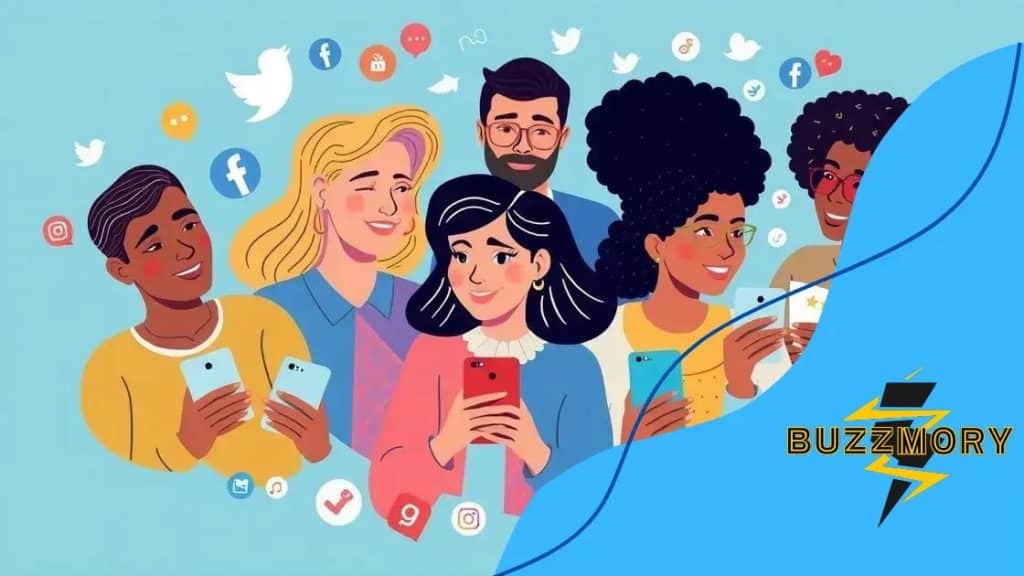The role of social media in global politics and activism

The role of social media in global politics and activism is pivotal, enabling rapid communication, mobilizing support for movements, and shaping public opinion while also facing challenges like misinformation and censorship.
The role of social media in global politics and activism is undeniable. Today, platforms like Twitter and Facebook have become arenas where political debates and social movements thrive. Ever wondered how your daily posts influence global dialogues? Let’s dive deeper.
Impact of social media on political movements
Social media has become a key player in shaping political movements around the world. Platforms like Facebook, Twitter, and Instagram are not just for socializing; they serve as powerful tools for change. Activists use these platforms to spread awareness and mobilize supporters, making it easier for voices to be heard.
How social media drives political engagement
One of the most significant impacts of social media is its ability to drive political engagement. By sharing information and real-time updates, users can stay informed about current events and issues that matter to them. This increased engagement fosters a more active and informed citizenry.
Benefits of political movements using social media
- Rapid dissemination of information
- Ability to connect global audiences
- Low barrier to entry for participation
- Encouragement of grassroots organizing
Moreover, social media allows for the organization of grassroots movements. Activists can quickly gather support for protests and initiatives. For example, movements like #BlackLivesMatter have effectively used social media to educate and engage followers around crucial social justice issues.
In addition to these benefits, social media also creates a space for marginalized voices. It enables groups that might struggle to gain attention in traditional media to highlight their struggles and advocate for change. Through live streams and viral posts, these groups can reach a massive audience.
Challenges faced by movements
However, there are challenges. The spread of misinformation can undermine political movements, leading to confusion and discontent. Additionally, censorship and the algorithms of social media platforms can limit the reach of important messages.
Still, the potential of social media as a tool for political movements remains strong. The way it connects people and ideas can lead to significant societal changes.
How social media shapes public opinion
Social media plays a vital role in shaping public opinion across the globe. With a click or a swipe, anyone can share their views, experiences, or news, which can influence countless others. This rapid flow of information creates a vibrant dialogue that can shift perspectives.
The influence of viral content
When posts go viral, they can dramatically change public perception. A single tweet or post can spark widespread discussions. People often share content that resonates with their beliefs, amplifying specific messages and viewpoints.
Key factors in shaping public opinion
- Accessibility to diverse viewpoints
- Immediate reactions to current events
- Engagement through comments and shares
- The role of influencers and thought leaders
In addition, social media is accessible, making it easy for people to discover new ideas. As users scroll through their feeds, they encounter various opinions, which can challenge or reinforce their own beliefs. For instance, during significant events, hashtags can unite people to express their feelings on a particular topic, creating a sense of community around shared views.
Moreover, users often follow influencers or public figures who voice their thoughts on social issues. These influencers can sway opinions, as their followers trust their insights. As a result, the reach and impact of their messages grow, further shaping the discourse.
Challenges in public opinion formation
However, there are challenges associated with this dynamic. Misinformation can spread just as quickly as valid information, causing confusion and misleading public sentiment. Additionally, echo chambers may form, where users only engage with opinions similar to their own, limiting exposure to diverse perspectives.
To navigate these challenges, critical thinking is essential. Users should verify sources and cultivate a well-rounded understanding of topics. By doing so, they can contribute positively to the ongoing conversation and engage meaningfully with different views.
Case studies of activism through social media

Case studies of activism through social media reveal how powerful these platforms can be in driving change. Many movements have successfully harnessed the power of social media to mobilize supporters and raise awareness. These stories highlight the potential for collective action.
Examples of successful movements
The #MeToo movement is a prominent example. It started as a simple tweet, but quickly grew into a global phenomenon. People shared their experiences of harassment and abuse, creating a massive online conversation. This movement not only brought awareness but also led to real changes in policies and attitudes.
Key features that enhance activism
- Use of hashtags to unify voices
- Shareable content that raises awareness
- Real-time updates that inform followers
- Community building among supporters
Another significant case is the Arab Spring, where social media played a crucial role in organizing protests against oppressive regimes. Activists used platforms like Facebook and Twitter to share information, organize demonstrations, and communicate with each other safely. This grassroots effort led to major political changes in several countries.
Additionally, the climate change movement has also gained momentum through social media. Activists like Greta Thunberg have utilized platforms to spread their message globally. Videos of her speeches went viral, motivating millions to join climate strikes. Social media allowed for widespread engagement and helped connect activists from various countries, amplifying their efforts.
Lessons learned from these movements
These case studies show that social media can be an effective tool for activism. However, they also highlight the importance of strategic communication. Clear messaging and strong visuals can enhance the impact. Moreover, understanding the audience is crucial for engagement. Activists must adapt their tactics to resonate with different groups.
In summary, the success of these movements illustrates the transformative power of social media in activism. By connecting like-minded individuals and facilitating communication, these platforms have become essential in the fight for social change.
Challenges of misinformation and censorship
The challenges of misinformation and censorship are significant in the realm of social media and activism. As these platforms grow in influence, the spread of false information can easily mislead the public. This can damage movements and drown out important messages.
The impact of misinformation
Misinformation spreads quickly, often faster than the truth. A single incorrect post can go viral in minutes, leading to confusion. People may form opinions based on unreliable sources, affecting their beliefs and actions. For example, during elections, false claims about candidates can sway voter opinions and lead to unfair outcomes.
Key aspects of misinformation
- Social media algorithms that promote sensational content
- Lack of media literacy among users
- Manipulation by bad actors
- Difficulty in tracking the origin of information
Moreover, social media algorithms often prioritize sensational content. This means that misleading posts can garner more attention than accurate information. As users scroll through their feeds, they may not be equipped to spot false claims. This lack of media literacy can exacerbate the issue.
Censorship also poses a challenge. Platforms often remove content deemed inappropriate or harmful. While this is necessary to prevent hate speech, it can inadvertently silence legitimate voices. Activists may find their posts removed, which restricts their ability to share important messages. The fine line between moderation and censorship is a contentious issue.
Strategies to combat misinformation and censorship
Fighting misinformation requires collaboration between users, platforms, and fact-checkers. Users can verify sources before sharing information. Platforms can improve their algorithms to promote reliable content. Additionally, educating the public on media literacy can empower users to discern credible information from falsehoods.
In addressing censorship, creating transparent guidelines for content moderation can help. Activists and users should have a clear understanding of what is acceptable. Open dialogue between platforms and users is crucial to ensure that important conversations are not stifled.
The future of social media in global politics
The future of social media in global politics is likely to evolve significantly. As technology advances, these platforms will continue to change how people engage with political content. This evolution could lead to new forms of activism and political discourse.
Trends shaping the future
One major trend is the rise of video content. Platforms like TikTok are gaining popularity and becoming vital tools for political expression. Activists are using short videos to communicate messages quickly and effectively. This shift could reshape how political campaigns are run.
Key factors influencing social media’s role
- Increased use of artificial intelligence
- Emergence of new platforms
- Changes in user behavior
- Government regulations on content
Artificial intelligence is also changing the landscape. AI-driven tools can analyze data to predict trends and identify influential voices. This technology may help political organizations target messaging more effectively. However, it also raises concerns about privacy and data security.
Emerging platforms will likely create new opportunities and challenges. As users migrate to different platforms, political movements must adapt their strategies. This adaptability is essential for effective communication and engagement.
The impact of government regulations
Government regulations on social media content can have a profound impact. Different countries have varying rules, and these can shape how activists communicate. Striking a balance between regulation and freedom of speech is crucial for maintaining open dialogue.
As these elements intersect, the role of social media in global politics will continue to expand. Activism will adapt, leveraging new technologies and methods to engage and inform. With this dynamic landscape, political movements will likely find innovative ways to harness the power of social media.
FAQ – Questions about the role of social media in global politics and activism
How does social media influence political movements?
Social media allows for rapid communication, helping movements grow quickly and efficiently by spreading awareness and mobilizing supporters.
What are the dangers of misinformation on social media?
Misinformation can spread rapidly, leading to confusion and distorted public views, which can harm political actions and decisions.
How can activists overcome censorship on social media platforms?
Activists can use clear guidelines and build strong networks to ensure their messages reach their audience, despite potential censorship.
What trends should we expect for the future of social media in politics?
Expect an increase in video content and the use of AI tools, as well as the emergence of new platforms that will change how political engagement occurs.





